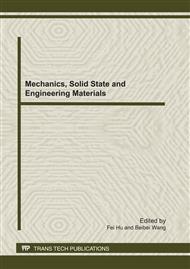p.151
p.157
p.161
p.166
p.170
p.174
p.181
p.186
p.194
Investigation of Photo-Induced C-H Bond Activating by CpRh(CO)2 Complex Using Density Functional Theory
Abstract:
The charge transfer and structural distortions that occurred in the complex CpRh(CO)2 upon excitation with an light irradiation were studied by density functional theory (DFT). The calculations showed that the electrons transferred from Cp to CO ligands with the transition of CpRh(CO)2 from ground state to the first excited state. Accompanying with this transfer process, CpM(CO)2 became distorted and the linear bond of M-CO became bent upon excitation. The second excitation is the strongest excitation which is identified to be metal to ligand CO charge transfer (MLCT) excitations. We also found the lowest excited state has little effect for the M-CO bond photoactivation while the photodissociation of CO from CpM(CO)2 can be achieved in the second excited state.
Info:
Periodical:
Pages:
170-173
Citation:
Online since:
July 2011
Authors:
Keywords:
Price:
Сopyright:
© 2011 Trans Tech Publications Ltd. All Rights Reserved
Share:
Citation:


